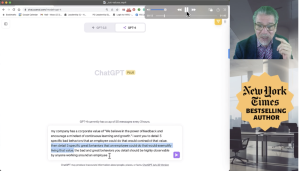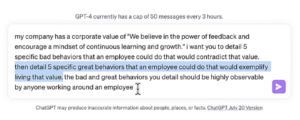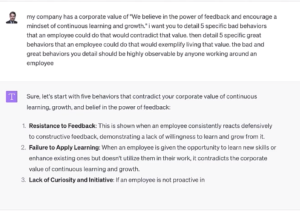If they haven’t done so already, it’s highly likely the CEO of your organization will soon become a big proponent of AI.
Why?
Because observant CEOs will be seeing that it’s their employees that are using AI; are significantly more productive and effective as a result of it; and so will want to benefit from this themselves.
We know this is happening because it’s what the research out there is starting to tell us.
One recent study, for example, discovered that software developers using AI could implement an HTTP server in JavaScript 55.8% faster than those not utilizing AI.
In a study by MIT researchers, professionals across a variety of roles, including managers, marketers, HR, consultants, and data analysts, reported a 37% increase in speed and quality when using AI to compose memos and reports, accompanied by a boost in job satisfaction.
It doesn’t stop here though.
In the realm of customer support, AI use led to a 13.8% increase in resolved customer issues per hour. A new agent using AI for only two months demonstrated equivalent skills to an agent with six months of experience without AI. And the attrition rate was found to be about 9% lower for agents using AI, indicating a positive impact on employee retention.
As such, any CEO worth their salt is going to be looking at those results and asking a pretty fundamental question: “Why aren’t we using AI to boost productivity?”
And this is where HR leaders need to get involved.
HR ‘has’ to support AI
A new study from Leadership IQ, called AI Readiness And The Road Ahead, revealed that 73% of leaders have no (or minimal) experience with AI tools.
Moreover, more than half of leaders see their workforce as indifferent, reluctant, resistant or in denial about AI.
Every HR leader who wants to remain a valued member of the team simply cannot be among those fighting against AI.
That doesn’t mean you have to accept AI wholesale. Concerns about bias in AI are both widespread and legitimate. For example, this video shows striking evidence of racial bias in AI image generation.
HR leaders can – and should – advocate strongly for implementing AI in responsible and ethical ways.
But to be an effective advocate, HRDs need to become highly proficient in the common AI tools.
How to get proficient
The good news is that you don’t need years of study in machine learning and neural networks to understand AI. But what you do need to do is actually start playing with the tools available.
There are hundreds of places you can start, but one of my favorites is using AI to markedly improve your corporate values.
Our study Why Company Values Are Falling Short revealed that only 24% of organizations have detailed what specific behaviors are necessary to live their company values.
That’s obviously a problem, but what’s even more striking is that employees have 107% higher employee engagement when their company has detailed what specific behaviors are necessary to live their company values.
Imagine that one of your corporate values says: “We believe in the power of feedback and encourage a mindset of continuous learning and growth.”
Further, suppose that your company lacks descriptions of specific behaviors that exemplify that value.
I could spend the next few hours writing detailed behaviors, or I could simply go to an AI tool and ask it to generate specific behaviors for me.
I did that exact exercise with ChatGPT (here’s a tutorial video that explains the process – also see pics below).
I asked the AI to give me both bad employee behaviors that would contradict that value and great behaviors that would exemplify living that value.



Here are some excerpts from ChatGPT’s output:
Bad Behaviors:
- Resisting Feedback: An employee may consistently argue against, dismiss, or ignore feedback, which not only rejects the opportunity for personal growth but may also discourage others from sharing insights and perspectives.
- Not Sharing Knowledge: Hoarding information or not contributing to the team’s knowledge base contradicts a mindset of continuous learning, as it undermines the shared pool of knowledge that everyone can learn from.
Great Behaviors:
- Seeking Feedback: An employee that actively asks for feedback exemplifies this value. They demonstrate the desire to improve and grow, showing an understanding that everyone has something to learn.
- Sharing Knowledge and Expertise: Regularly contributing to team knowledge, whether through casual conversation, structured presentations, or other forms of sharing, shows a commitment to the collective growth of the team.
Perhaps I could have created something better, but it would have taken a lot longer than the – literally – 30 seconds it took ChatGPT.
And quite frankly, the AI’s output is dramatically better, and more readable, than what most companies produce when they attempt an exercise like this.
So, whatever type of task you give AI, the point here is that you need to get started using and testing the tools.
The more fluent you become, the more you can figure out what tasks are and are not appropriate for your organization; the more you can protect against bias; and the more you can influence how your company uses AI.
The one thing you can’t do is become reluctant, resistant, or in denial.
